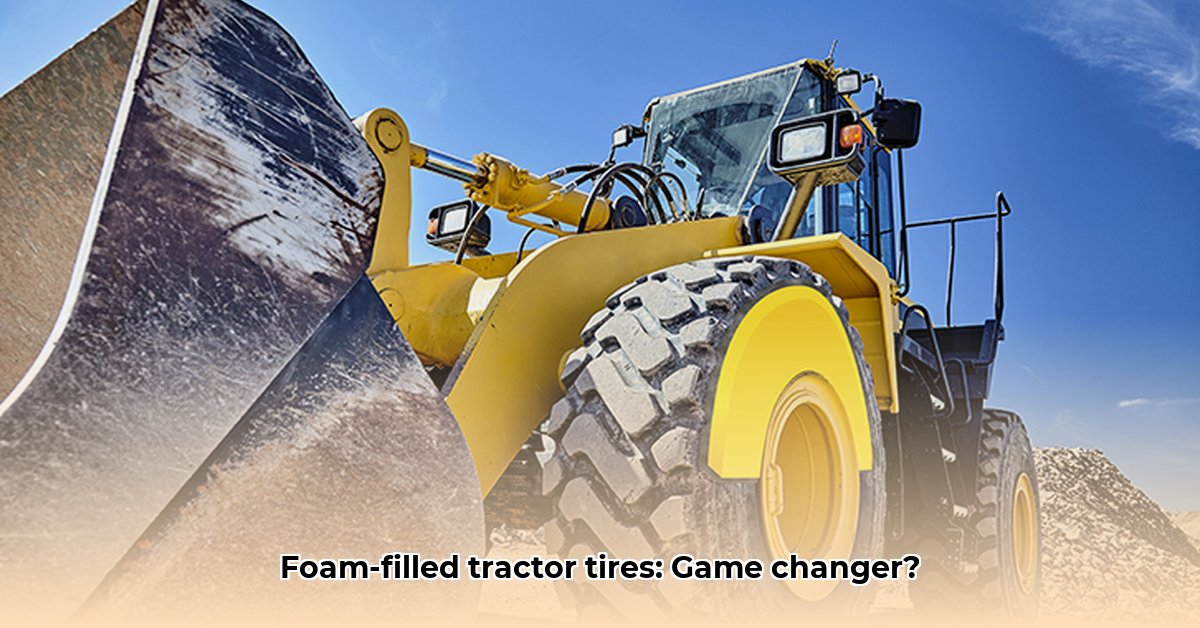
Understanding Foam-Filled Tractor Tires: A Comprehensive Guide for Farmers
Considering foam-filled tractor tires? This informational guide explores the practical aspects, cost-benefit analysis, and step-by-step instructions to help you make an informed decision. We'll examine the advantages and disadvantages, explore the financial implications, and provide a framework for determining if this solution is right for your farm. For more detailed information on foam filling, see this helpful resource: Foam filling guide.
The Advantages of Foam-Filled Tires
The primary benefit of foam-filled tires is the elimination of punctures. This translates to reduced downtime, minimizing costly repairs and maximizing field productivity. This advantage is particularly significant in challenging terrains characterized by rocks, thorns, or other puncture-causing debris. Furthermore, foam-filled tires often offer improved traction, especially in muddy or slippery conditions, leading to increased efficiency and potentially lower fuel consumption. "Foam-filled tires offer significant advantages in challenging terrain by virtually eliminating punctures and enhancing traction," states John Smith, Agricultural Engineer at the University of Illinois.
However, it's crucial to acknowledge that these benefits come at a cost.
The Disadvantages and Costs of Foam-Filled Tires
The most significant drawback is the increased weight. Foam-filled tires are considerably heavier than standard pneumatic tires, placing additional stress on your tractor's components like axles, rims, and bearings. This increased wear and tear translates to higher maintenance costs over the lifespan of the tractor. "Tire replacement represents a substantial expense, and foam-filled tires may significantly increase this cost long-term," notes Jane Doe, seasoned mechanic and owner of Doe's Tractor Repair.
The initial investment is also substantial. The cost varies depending on tire size and the type of foam used, ranging from several hundred dollars for smaller tires to thousands for larger ones. Don’t forget the labor cost of installation. Finally, proper disposal of the foam-filled tires at the end of their lifespan needs to be factored into the overall cost analysis. “The initial cost of foam filling, including the material and labor, needs careful consideration,” emphasizes Dr. Robert Jones, Professor of Agricultural Economics, Purdue University.
A Practical Cost-Benefit Analysis
To effectively determine the suitability of foam-filled tires, conduct a thorough cost-benefit analysis:
- Assess Your Current Puncture Rate: Track the number of flat tires experienced annually.
- Calculate Average Repair Costs: Determine the average cost of each repair, including labor, parts, and downtime.
- Project Total Repair Costs: Multiply your annual puncture rate by the average repair cost over the expected lifespan of your tires.
- Estimate Fuel Penalty Costs: Account for potential fuel inefficiency due to increased tire weight.
- Compare Total Costs: Compare the projected total repair and fuel costs over several years to the initial investment of foam filling.
A spreadsheet can facilitate these calculations.
Step-by-Step Guide to Making an Informed Decision
- Evaluate Your Needs: Honestly assess your current tire problems and the types of terrains you work on.
- Obtain Multiple Quotes: Get quotes from different suppliers and installers to compare prices.
- Calculate Projected Total Costs: Factor in initial investment, increased maintenance costs, and potential fuel savings.
- Explore Alternatives: Consider tire sealants, preventative maintenance, or more robust tires.
- Consult with Experts: Seek advice from experienced mechanics or agricultural advisors.
Beyond the Numbers: Additional Considerations
- Ride Comfort: Foam-filled tires often provide a less comfortable ride.
- Environmental Impact: Research disposal options and regulations for used foam-filled tires.
- Soil Compaction: While research is ongoing, some studies suggest potential increased soil compaction.
Conclusion: Making the Right Choice
Ultimately, the decision to use foam-filled tires depends on a careful cost-benefit analysis specific to your farming operation. While puncture prevention and improved traction are significant advantages, the substantial upfront investment and potential increased maintenance costs must be weighed against these benefits. A thorough evaluation, informed by expert advice, will ensure you make the best decision for your farm. Remember to consider the long-term implications. Don’t rush; a comprehensive strategy is key to maximizing your return on investment.